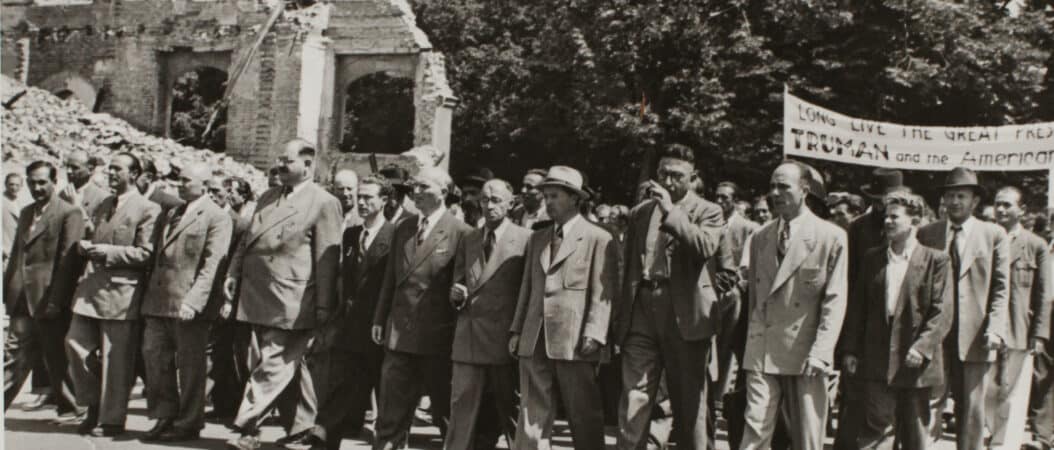
Picture Stories. Portraits of Munich Jews
A boy in a sailor suit, a lady in a beret and with huge puffed sleeves, a rabbi with an open…

Munich Displaced
The exhibition project “Munich Displaced” presents a variety of experiences in the immediate post-war period in Munich. For the first time, the focus is on the heterogeneous group of Displaced Persons (DPs), i.e. all those people who fled, were displaced or deported as a result of the World War II and now found themselves in Munich after 1945.
In two parallel exhibitions at the Jewish Museum Munich and the Münchner Stadtmuseum, the histories of the DP communities are to be placed in a local historical context.
Munich Displaced. The Surviving Remnant
The Jewish Museum Munich looks in detail at the Jewish DP infrastructure in Munich. The area around Möhlstrasse in the Bogenhausen neighborhood, which was of immense importance to Jewish DPs after 1945 — with key institutions such as Joint, the Central Committee of Liberated Jews, grocery stores and kosher restaurants — is examined in depth. The setting up of businesses by Jewish DPs in Munich, the reopening of the Reichenbachstrasse Synagogue in 1947, and the “Exhibition of Jewish Artists” in 1948 at the Städtische Galerie im Lenbachhaus are also highlighted with exhibits shown for the first time. The Jewish Museum Munich identifies addresses that were once part of Jewish DPs’ everyday life, history, and culture. Many of these locations still exist today, and yet all traces of this fleeting Jewish perspective have long since disappeared. The idea of how to develop this topic was based on the Yiddish information brochure “Der Najer Jidiszer Wegwajzer fun di wichtigste Institucjes in Minchen” from the DP era.
The Jewish Museum Munich fervently hopes that descendants of former DPs will come forward with further addresses, information, and memorabilia from this period. In this way, museum visitors can make a direct contribution to our collection and ongoing research work.
Curators: Jutta Fleckenstein and Ulrike Heikaus in cooperation with Sarah Steinborn
Exhibition Design: gewerkdesign, Berlin